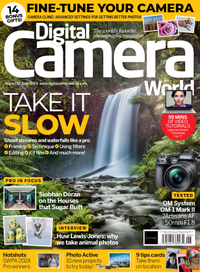"A compact camera and two good strobes will produce better photos than an expensive camera with no artificial light"
Leading international underwater photographers share their tips for success, love for the oceans and their go-to kit
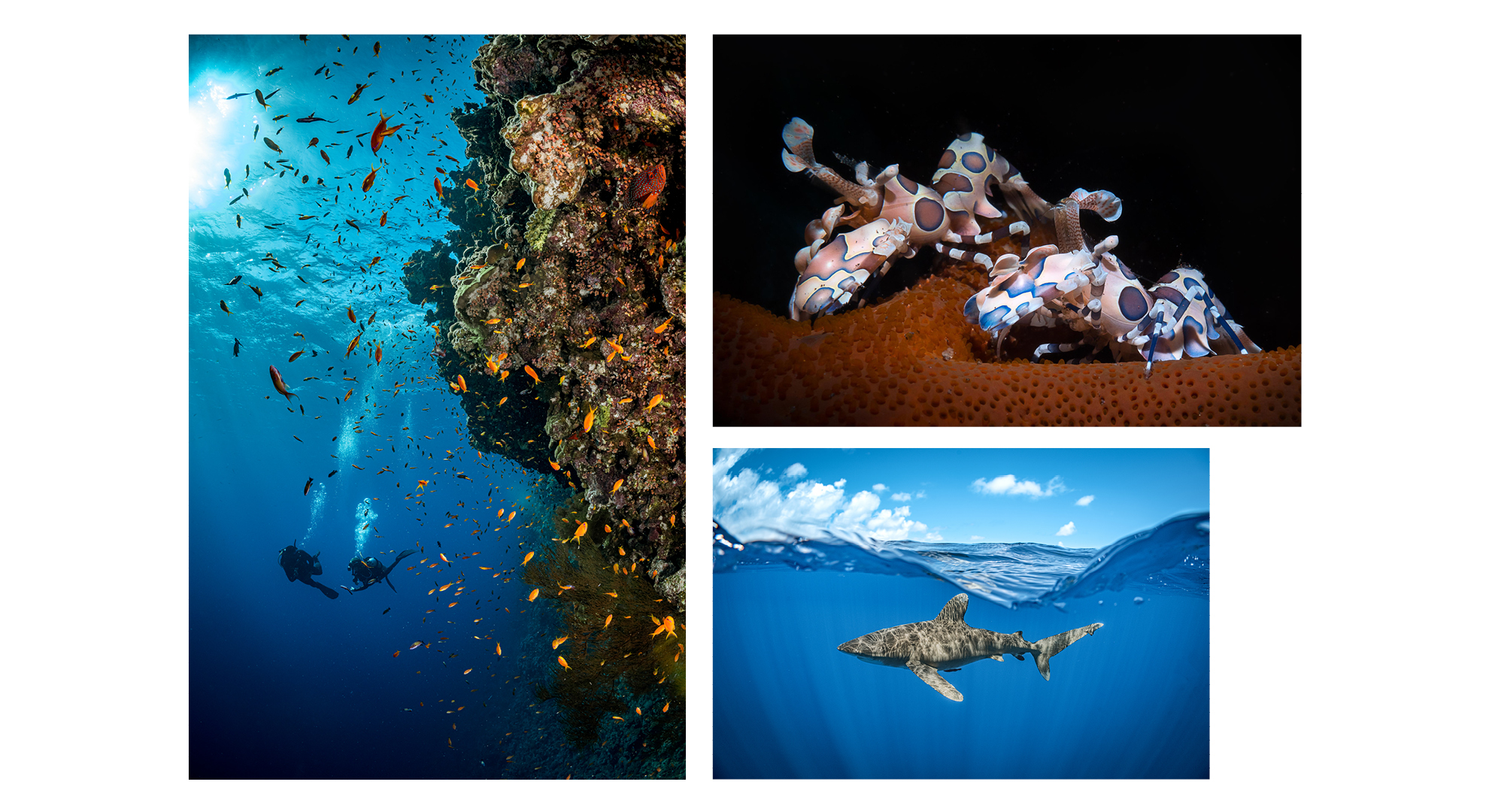
Leading scuba diver training organization PADI recently released a new batch of certification cards graced with images from some of the finest underwater photographers.
A PADI certification card is given to anyone who has successfully completed one of the organization’s training courses at any of its dive centers around the world.
And as they also verify a diver’s training levels, a certification card is a badge of honor in the diving community.
Whether a physical card (waterproof, of course) or an e-card that can be used on a smartphone, a PADI certification card will sport a stunning image celebrating the diversity and wonder of marine life.
With a new batch of certification cards has just been released, we caught up with two of the photographers to feature on them, Jay Clue and Sam Glenn-Smith…
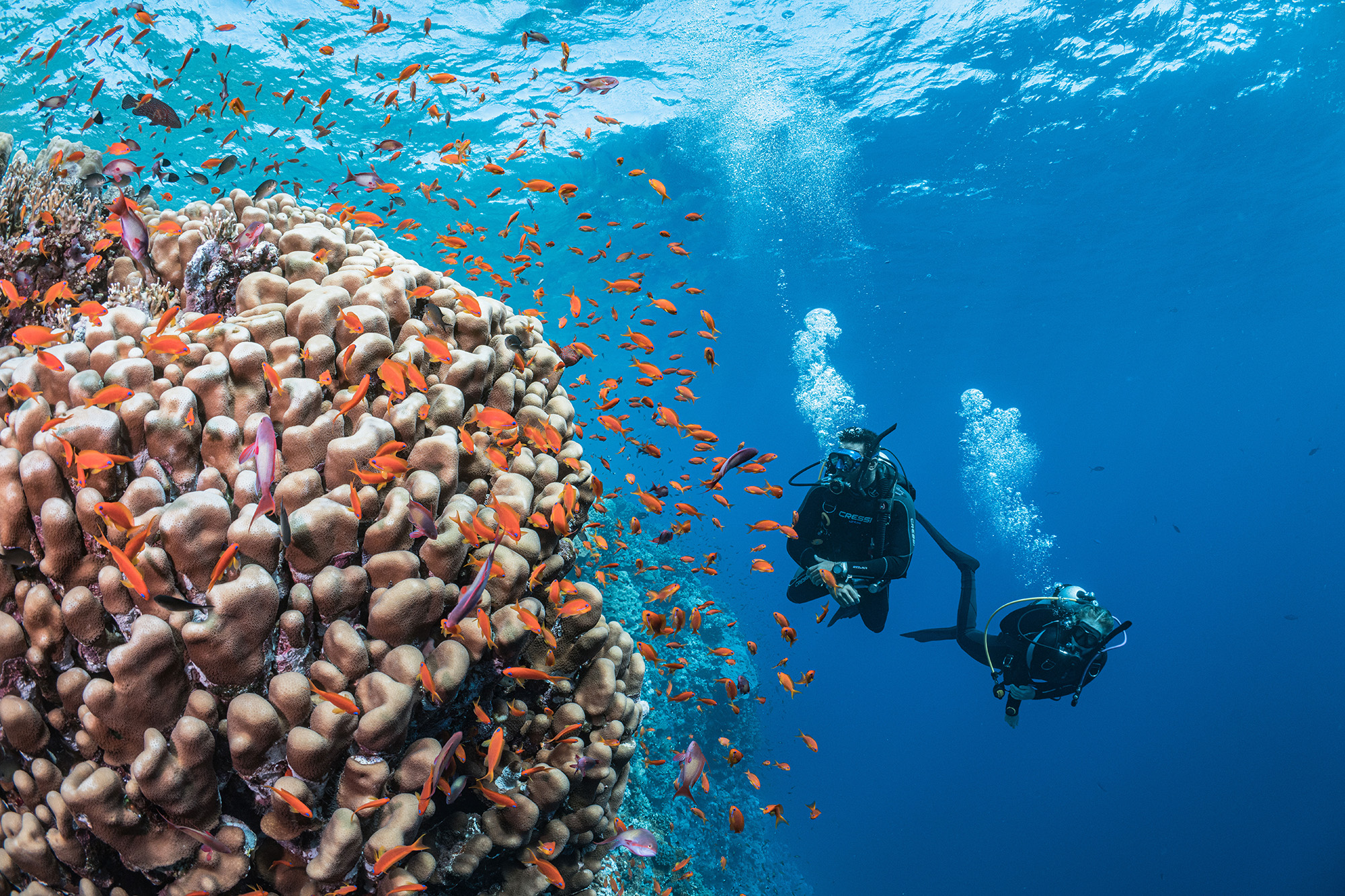
How did you get into marine photography?
Jay Clue: I purchased my first camera just before I moved to Baja California in Mexico six years ago. It was a small compact camera with plastic housing.
Back then, I knew almost nothing about photography. I’d just run around mashing buttons in Auto mode, hoping I would get some epic shots.
Eventually, a close friend sat me down and said, ‘Okay, you need to learn how to shoot photos or I’m taking the camera away’. She’s an incredible photographer and I’ll forever be grateful that she took the time to teach me the basics of shooting in Manual mode.
Being a big nerd at heart, I began going down rabbit holes online, reading guides and watching tutorials, then going out and practicing what I’d learned.
I was still horrible at it but I really wanted to be able to capture photos that showed the same beauty I felt when I was in the ocean, so I kept pushing on and practicing more and more.
Fast forward a year or so and I decided to save up my pennies to upgrade from my compact to a crop-sensor mirrorless camera.
To my surprise, around six months or so later, I won my first photography award. Not long after that, I placed fourth in the world for the best up-and-coming photographer, as well as picking up a few other placements and awards that year.
But then, I had a change of heart and stopped entering competitions. I realized something incredibly important: beautiful images and stories can do a lot more than just be pretty.
They have this incredible power to make humans who have never been to the ocean before fall in love with it and maybe even want to protect it. This realization became ingrained in my work as I continued learning and growing as a photographer.
For me, it really changed the quality of my shots. I no longer only wanted to just capture the beauty I saw in the ocean but instead use my photos to inspire others to hopefully feel that same passion I have for our oceans.
Bringing a purpose to my photography helped me take it to new levels.
Sam Glenn-Smith: I was influenced by two incredible men who continue to inspire me to this day.
Alan Wiggs, who was my high school teacher and taught me to dive, and Daniel Geary (also known as Doctor Frogfish), who first put a camera in my hand and inspired the creative side in me to start shooting underwater.
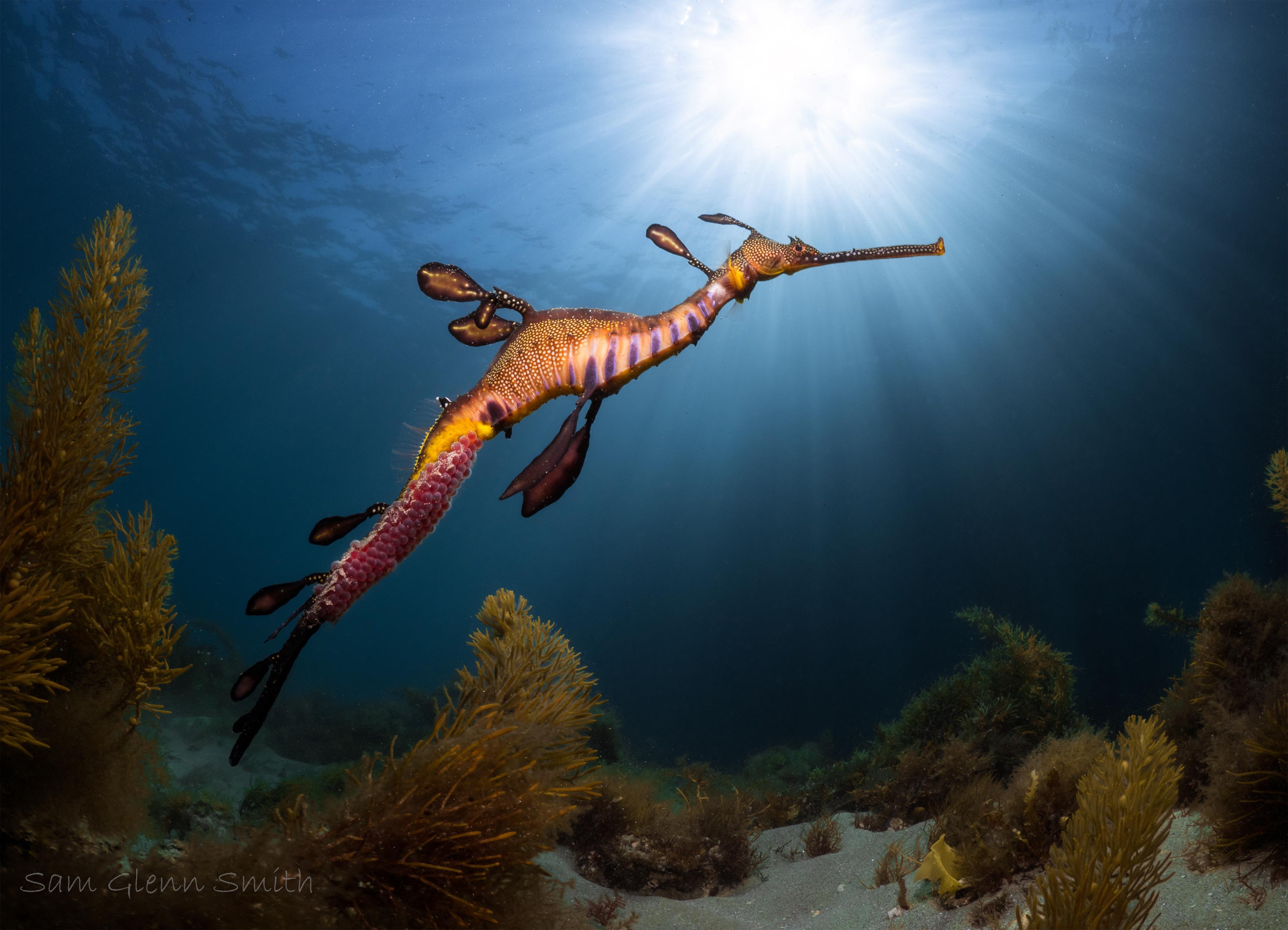
Where is your favorite place to dive?
Jay Clue: There are so many mind-blowing places to explore and beautiful encounters to have, I’m not sure I can pick just one.
Cabo San Lucas always holds a special place in my heart, because it’s where I started as a photographer. There’s just so much opportunity in Baja California, whether it’s the mobula rays, sea lion pups, whales, marlin or sharks. It’s almost endless.
I also love Dominica’s sperm whales, the Revillagigedo Islands’ mantas, Bimini’s Great Hammerheads and the Philippines’ coral or macro life… I could go on.
Polar bears and penguins are currently at the top of my underwater photography bucket list, though. Fingers crossed, I’ll get to experience one of them soon.
Sam Glenn-Smith: I love diving, both domestically and abroad, so it’s hard to narrow it down to just one specific place.
Domestically, I love diving in my own backyard on the Mornington Peninsula [Victoria, Australia], due to the incredible biodiversity accessible by pier and shore dives – Portsea Pier, in particular, is incredible on the right day.
The Philippines will always hold a special place in my heart as it’s where so many of my diving adventures have started.
It’s an especially incredible part of the world for macro diving, of which I’m a huge fan, and I can’t wait to get back there.
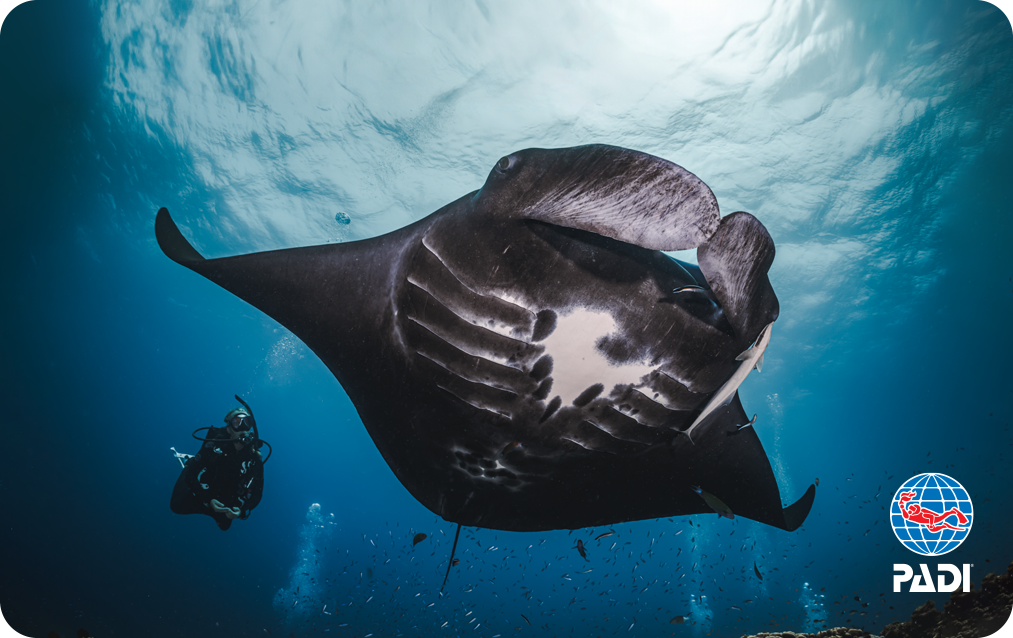
Where was the photo on your certification card taken, and what is the story behind it?
Jay Clue: In October 2023, I was working on a brand shoot for PADI at the gorgeous Wakaya Island Resort in Fiji. One of the coolest things about this project was that we had Luke Gordon, the leader of Manta Project Fiji, along with us.
Learning about the incredible manta research and conservation work that his team have been conducting in the area, while also getting to photograph these beautiful creatures, was amazing.
For someone like myself, coming from a background of designing platforms to bridge marine science and conservation with tourism, it was special.
The manta in the photo is Bula Blue (M467). She has only been spotted four times and only at Wakaya. Her first sighting was in June 2023, only a few months before she came to visit us. Even more special, our team got to name her.
She’s a juvenile and curious – spending almost the entire dive interacting with us. The diver in the background is Julie Andersen, founder of Shark Angels and global director of brand and PR at PADI. Julie’s work in shark conservation is inspiring, to say the least.
So being able to capture this shot of a curious young manta with a passionate conservationist alongside a talented marine scientist at a photoshoot for PADI is everything you could ever want in one package.
If there was ever a perfect moment that summed up PADI’s ‘Seek Adventure, Save The Ocean’ tagline, this was it.
Sam Glenn-Smith: The photo on my card was taken at Flinders Pier, in Victoria, Australia. Flinders is one of two dive sites where we regularly see the incredible Weedy Seadragons, and is an incredibly popular dive site.
Over the summer months, the male seadragons hold clutches of bright pink eggs until they hatch. It is not unusual to see males with eggs hanging out together, but trying to capture an image of that proved difficult.
This photo was a combination of patience and luck – finally managing to capture something so incredible as two dragons swimming in unison carrying eggs. To this day, it is one of my favorite photos.
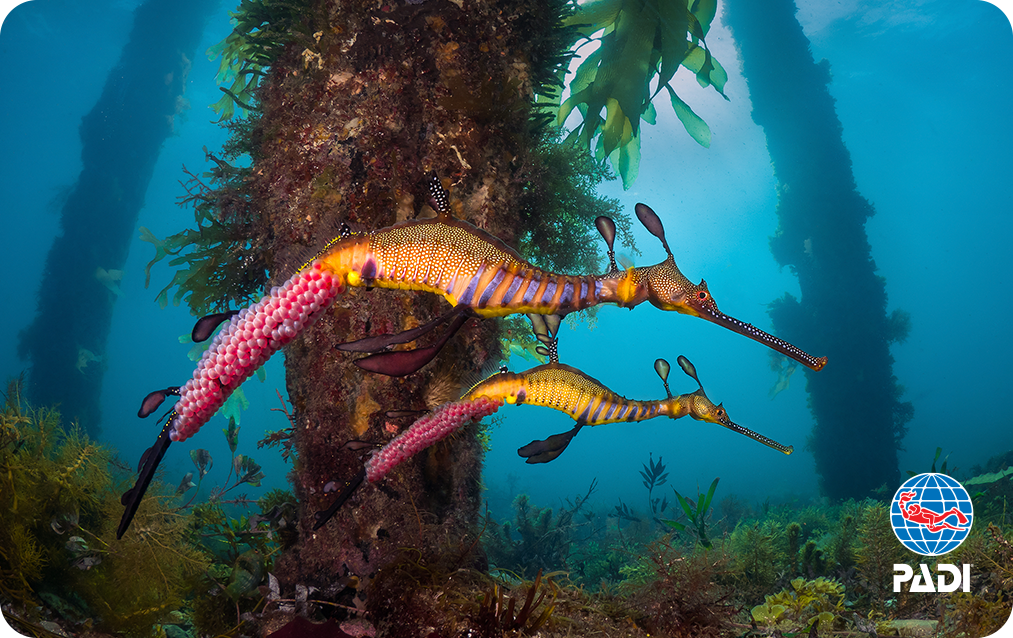
What are your proudest achievements to date?
Jay Clue: The first that comes to mind is finding my true passion and somehow turning it into a career.
I love that I can use my skill set to work with brands and magazines, not only to inspire more people to fall in love with the ocean but also to push companies to think more sustainably and bring research and conservation groups to the table. It has allowed me to merge my love of nature with my passion for conservation and photography.
Sam Glenn-Smith: I love the fact that I can share so much of our incredible marine world with individuals who cannot or have not ever dived.
To see the reactions of people who never knew such incredible creatures existed always puts a smile on my face because, ultimately, it gives them a reason to care and think about the ocean.
It’s incredibly hard to be passionate about something you don’t know or don’t understand, so being able to share images with non-divers is always a thrill.
Photographically, any recognition of my images from large, well-known bodies such as PADI also fills me with pride. It’s a tangible way for me to know my images are well received by divers and photographers and motivates me to get that next great shot.
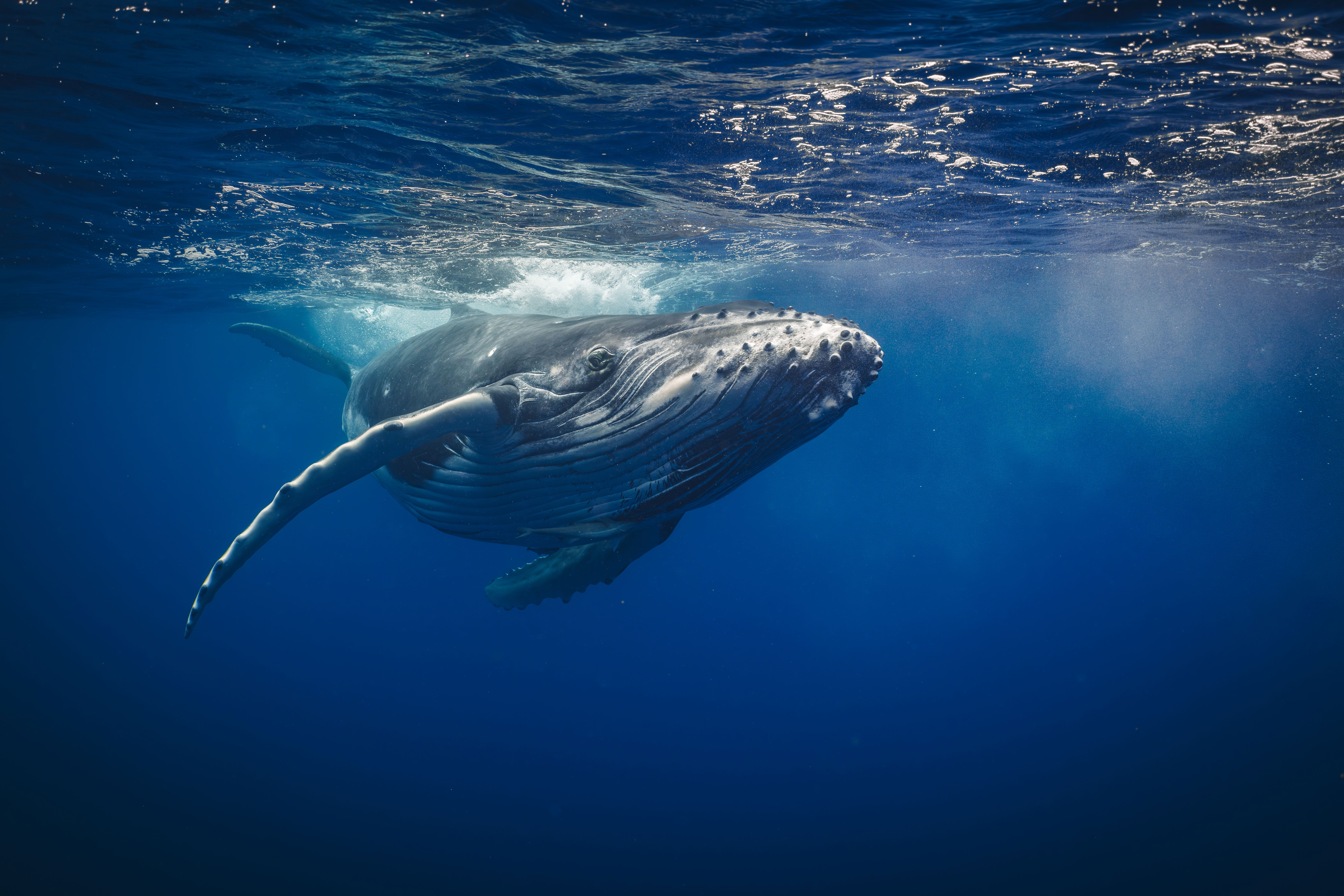
What camera setup would you recommend for anyone looking to start underwater photography?
Jay Clue: I love Sony Alpha full-frame mirrorless cameras. I shoot a Sony A1 in a Nauticam housing for my underwater work.
For wide-angle, I like Nauticam’s WACP-1 (wide-angle conversion port) with Sony’s FE 28-60mm f/4-5.6 lens. The optics on the WACP are incredibly sharp underwater and convert the Sony lens to a 130-degree field of view.
When I’m not shooting with the WACP, I’ll use a Sony FE 16-35mm f/2.8 G Master or Sigma’s 15mm f/2.8 Fisheye.
Sam Glenn-Smith: With the huge amount of cameras on the market and the incredible innovations and technologies these days, having the biggest or most expensive underwater camera setup doesn’t always equate to producing the best photos.
We live in such exciting times that so many different cameras exist from compact to mirrorless to full-frame that almost everyone can get into the water and start shooting.
I’d recommend people start their underwater journey with a compact. Most underwater photo competitions these days have a compact category and the shots winning these competitions are absolutely incredible.
The key to getting the best shots on any camera system is knowing and understanding what it can and can’t do.
A lot of users of the OM System Tough series, for example, buy a new camera and set it up according to guides they find online. These help you get the most out of your camera but a lot of users will blindly follow the guide without understanding what’s going on.
Setting a compact camera to Aperture Priority mode, but not understanding how aperture and ISO affect the amount of light coming into the camera, makes for some frustrating dives, particularly when using it with an underwater flash.
If you are going to follow a guide to set up your underwater camera for the first time, make sure you take the time to learn and understand how these changes affect the images being produced – it will save a lot of frustration and, ultimately, allow you to get some incredible shots with your camera.
I love shooting with mirrorless cameras for their incredible range of lenses and quality of images, but for a newcomer getting into underwater photography, compact cameras are a great introduction.
Do your research and work out which camera suits the style of photography you’re interested in before buying one.
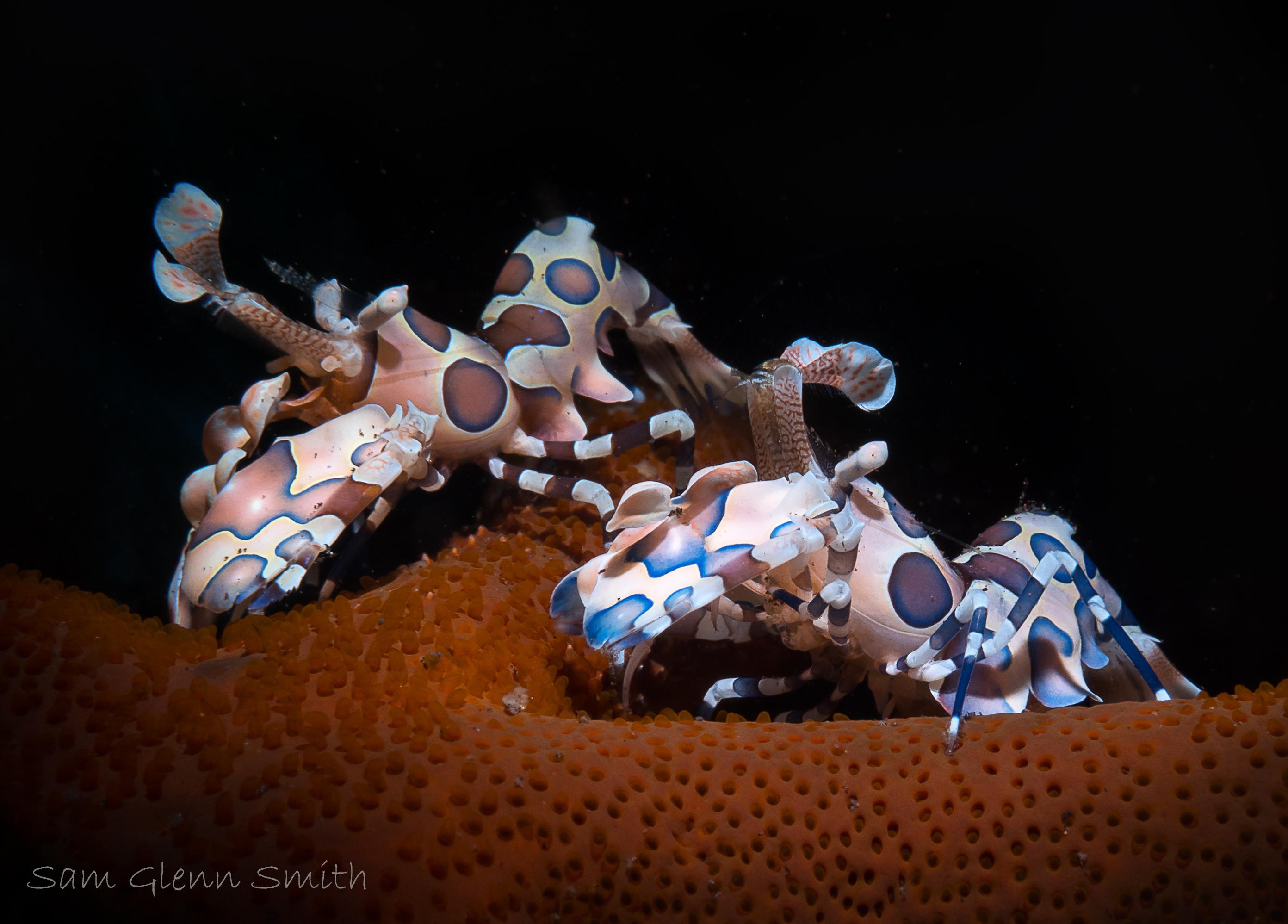
Can beginners start off by using built-in flash underwater, or is special lighting required?
Jay Clue: You don’t want to use a built-in flash underwater because the light illuminates the water between you and the subject, which can create a lot of backscatter.
Essentially, the light bounces off particles in the water and reflects back to the camera as white dots, making your shots look like they were taken in a snowstorm. Internal strobes aren’t powerful enough to cut through water and properly illuminate the subject.
Instead, it’s better to use external strobes, such as Sea & Sea Imaging’s YS-D3 Mk II Lightning strobes, or video lights, such as Keldan’s 8XR lights.
By mounting the lights on arms attached to the camera housing, we can space them out so the outer edge of the beam is just touching the subject and doesn’t illuminate the water between your subject and the camera.
The other benefit of external strobes is that you can control the shadows and highlights they create by moving them to different spots. For example, to create hard shadows, I move both strobes to one side of the housing to cast harder shadows on the subject.
Sam Glenn-Smith: A lot of people think that buying the best camera and housing for their budget will produce the best photos when artificial lighting is just as important – if not more so – than the camera itself.
Having a video light or strobes will improve your images, enhancing colors and contrast and making your subject stand out from backgrounds.
Investing in a good set of strobes is as important as choosing the right camera. In fact, buying a more cost-effective camera, such as a compact, and two good quality underwater strobes will produce better photos than a more expensive camera with no artificial light.
Most strobes on the market are cross-compatible with almost any camera and can be used across various camera ranges – for instance, starting on a compact camera and upgrading to a mirrorless camera and housing most strobes will have cross-compatibility.
Research the market and pick the best strobes you can that will be a good tool to learn with, but will also be future-proofed if you decide to upgrade to a more advanced camera system.
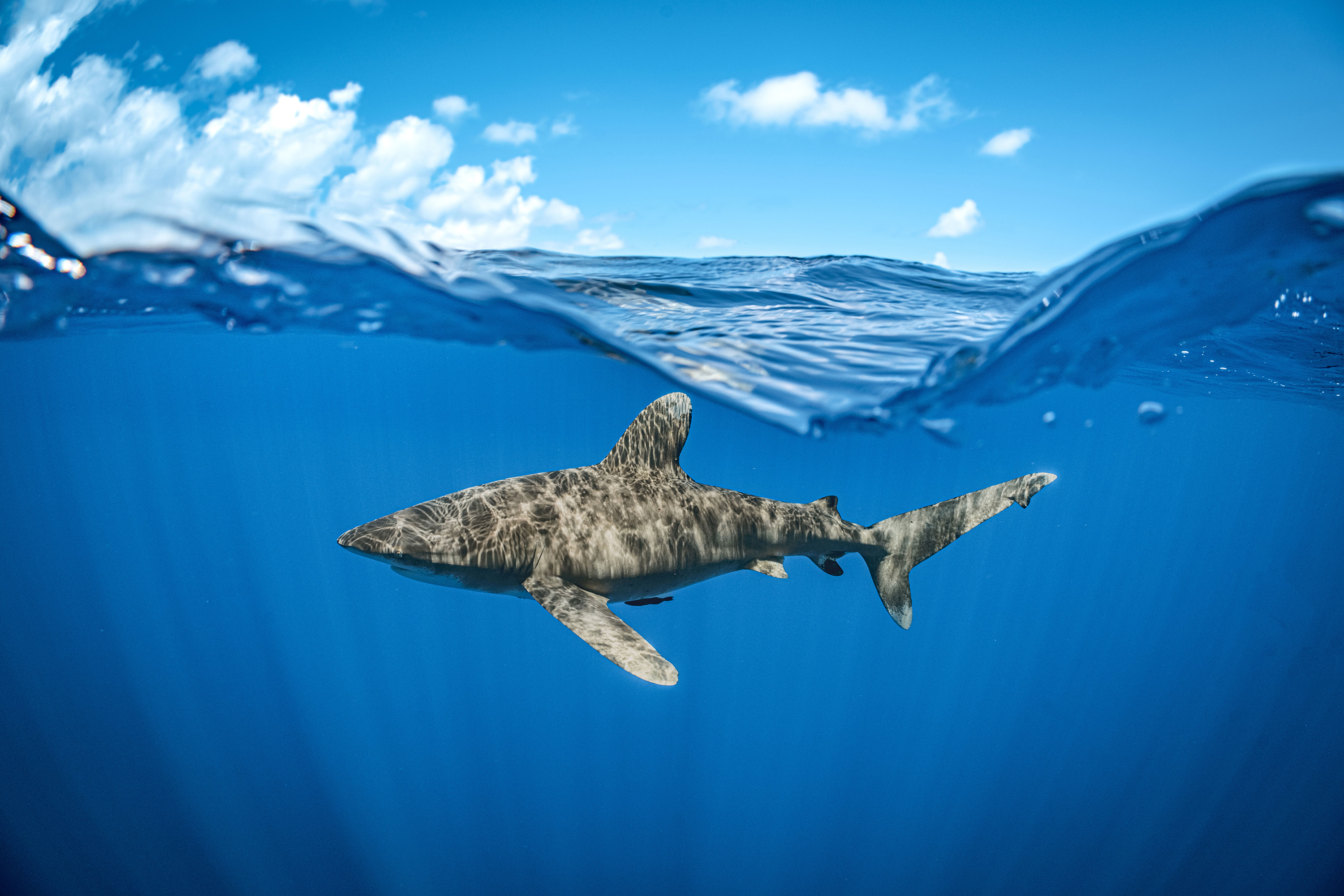
Which settings are best to use underwater – the semi-automatic modes or full manual?
Jay Clue: Full manual is the way to go in most situations, as it gives you control over your shots. Light works differently underwater than on land and cameras tend to try to overcompensate when running in Auto.
You’ll want to dial in custom white balance underwater, as water absorbs the visible spectrum of light quickly. For example, at six meters, you’ve already lost the entire red spectrum of visible light.
Sam Glenn-Smith: For underwater photography, more control is better – especially when working with artificial lighting. I recommend learning full manual control (or as close to full manual that your camera allows – Aperture Priority on a compact, for instance).
While there is a near-infinite combination of settings to produce a variety of images, with underwater photography, the ISO typically remains low (100-400) and shutter speed remains fast (1/125 to 1/250 sec).
Shutter speed is one of the least varied settings used in underwater photography: if it is too slow, you will get motion blur, but most strobes (artificial flash) will sync at 1/250 or 1/320 sec if you are using sync cables.
Underwater photographers are heavily reliant on aperture to control both the amount of light coming through the lens, as well as the depth of field – both are vital in underwater photography.
Auto exposure modes, including underwater mode, can be used if all else fails, but you will always get better results shooting in a variation of manual.
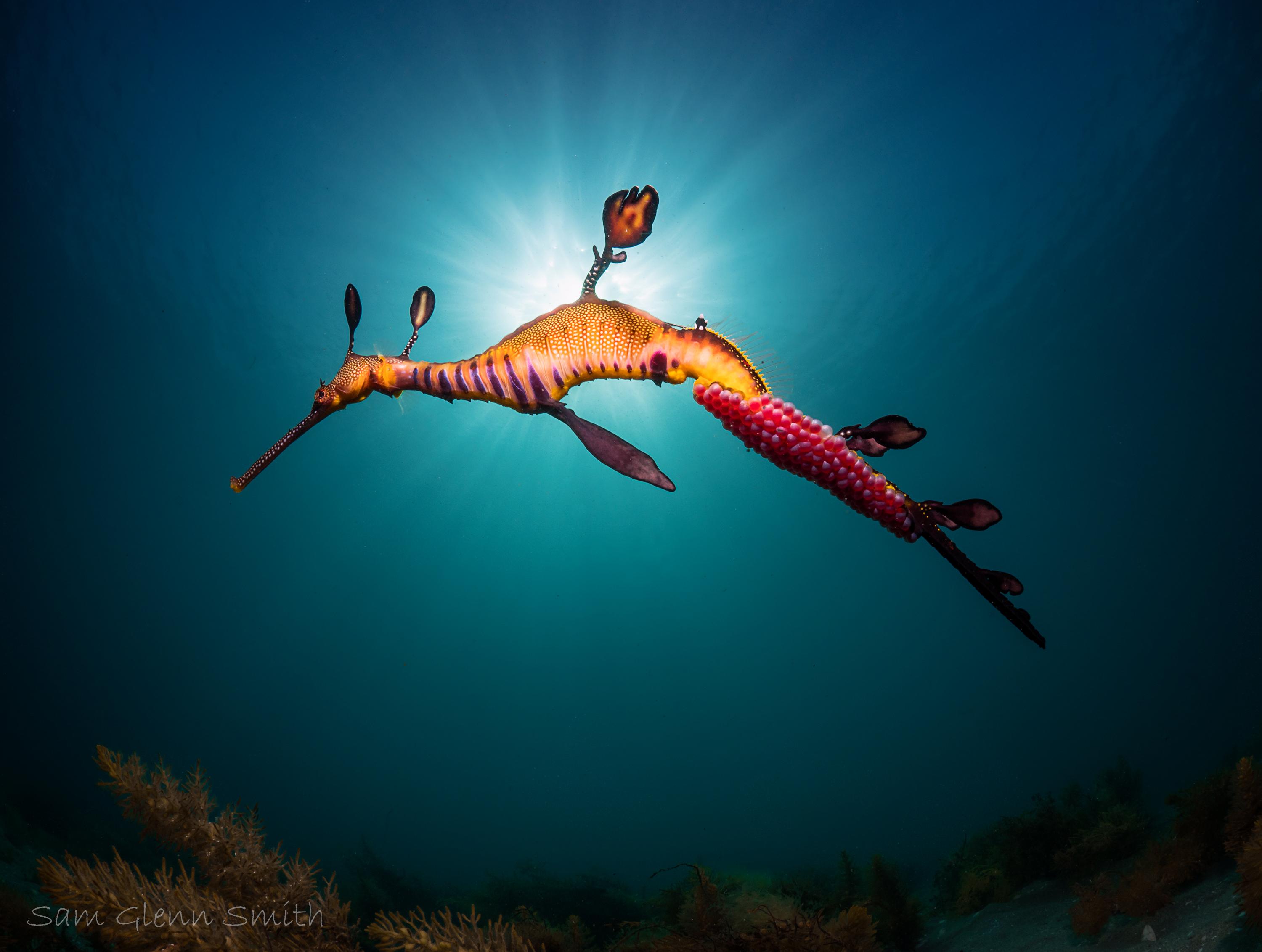

Clue’s creative practice comprises wildlife, adventure travel, astrophotography and conservation photography. His work is driven by a passion to inspire people across the globe to take action and protect the natural beauty of the world. As well as working as a commercial photographer, Clue also dedicates time to teaching photography workshops and leading unique ocean wildlife trips worldwide. Clue is a PADI Master Instructor and a Tec Trimix Instructor, as well as a cave diver and Closed Circuit Rebreather Diver.

Hailing from the Mornington Peninsula in Victoria, Australia, Glenn-Smith is fascinated by our marine world and loves to dive as much as he can. A PADI instructor and dive guide, Glenn-Smith’s career at The Scuba Doctor Dive Shop in Rye allows him to spend time in the water doing what he loves, giving instruction, guiding and underwater photography – a passion he shares with visitors from Australia and further afield.
You may also be interested in our guides to the best waterproof cameras and the best underwater housings for cameras and phones, and a tutorial on how to photograph underwater scenes.
Digital Camera World is the world’s favorite photography magazine and is packed with the latest news, reviews, tutorials, expert buying advice, tips and inspiring images. Plus, every issue comes with a selection of bonus gifts of interest to photographers of all abilities.
Get the Digital Camera World Newsletter
The best camera deals, reviews, product advice, and unmissable photography news, direct to your inbox!

Niall is the editor of Digital Camera Magazine, and has been shooting on interchangeable lens cameras for over 20 years, and on various point-and-shoot models for years before that.
Working alongside professional photographers for many years as a jobbing journalist gave Niall the curiosity to also start working on the other side of the lens. These days his favored shooting subjects include wildlife, travel and street photography, and he also enjoys dabbling with studio still life.
On the site you will see him writing photographer profiles, asking questions for Q&As and interviews, reporting on the latest and most noteworthy photography competitions, and sharing his knowledge on website building.
